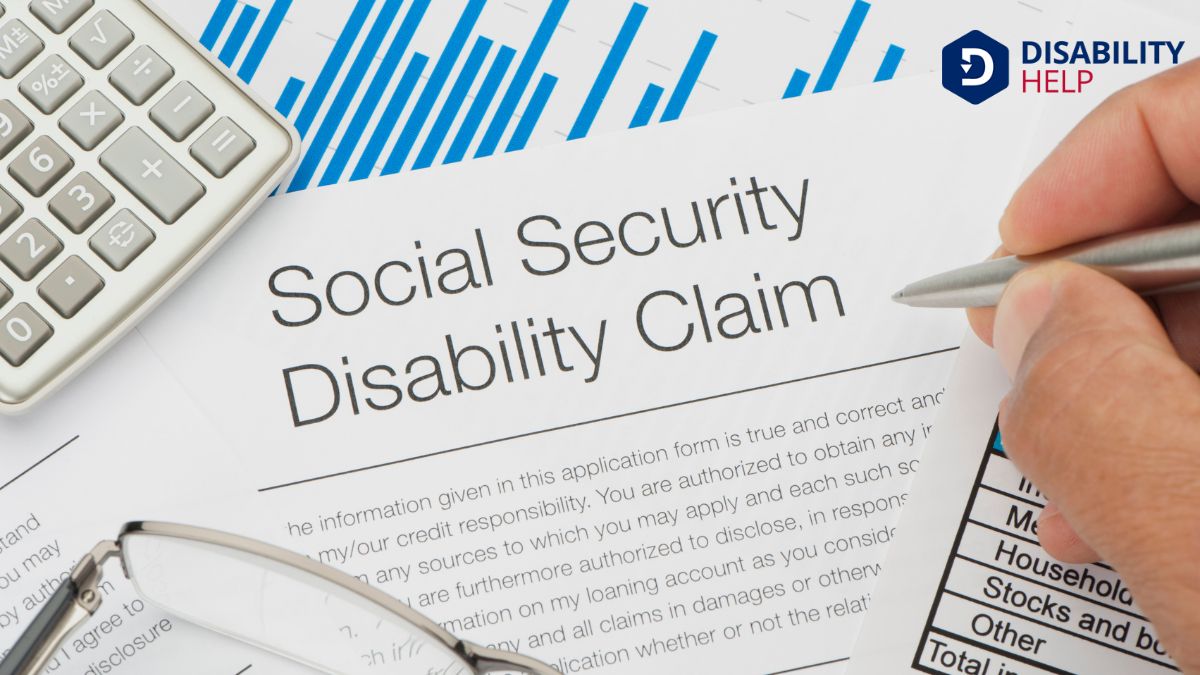As we explore the possibility of receiving both SSDI and private disability insuranceA form of insurance that provides income to individuals who are unable to work due to a disability. benefits, it’s vital to understand how these benefits might interact. While having both can provide financial stability, it’s important to take into account how private insurers might adjust their payouts based on SSDI. Are there strategies to guarantee that we maximize what we receive? Let’s uncover the nuances and potential advantages of maneuvering through these benefits effectively.
Key Takeaways
- Yes, you can receive both SSDI and private disability insurance benefits simultaneously.
- Private insurance may adjust payouts to account for SSDI benefits, maintaining income levels.
- SSDI requires a qualifying disability and work credits; private insurance needs a pre-existing policy.
- Coordinating claims and timelines can maximize benefits and minimize financial gaps.
- Understanding policy terms and potential offsets in private insurance is essential for accurate benefit planning.
Understanding Social Security Disability Insurance (SSDI)

Social Security Disability Insurance (SSDI)A U.S. government program that provides financial assistance to individuals who are unable to work d... is an essential program designed to provide financial support to individuals who've become unable to work due to a disability.
We understand how significant it is for those of us facing such challenges to comprehend what SSDI offers. Funded through payroll taxes, SSDI benefits are available to those who've worked long enough and recently enough, contributing to Social Security.
The program evaluates eligibility based on your work history and the severity of your disability. We must meet specific criteria to qualify, ensuring we genuinely need the support.
Once approved, SSDI can offer a lifeline, helping cover basic expenses and maintain some stability.
Let's make sure we clearly grasp how this fundamental program functions and supports us.
Exploring Private Disability Insurance Options
While SSDI provides an essential safety net for those of us unable to work due to a disability, it’s not the only option available. Private disability insurance can offer additional financial support, helping us maintain our lifestyle if we're unable to earn an income.
These policies are typically obtained through employers or purchased individually. Employer-provided plans often cover a percentage of our salary, while individual policies can be tailored to our specific needs, including coverage amount and benefit period.
Understanding the nuances of private disability insurance is vital so we can make informed decisions. It’s important to assess our financial needs, compare policy options, and consider factors like premiums and waiting periods.
Eligibility Criteria for SSDI and Private Disability Insurance
Grasping the eligibility criteria for both SSDI and private disability insurance is vital for securing thorough financial protection.
For SSDI, we must have a qualifying disability that prevents us from working and have enough work credits from paying Social Security taxes. Typically, this means having worked five out of the last ten years.
On the other hand, private disability insurance often requires us to have a policy in place before the onset of a disability. Each policy has its own definitions and terms, so it's important we review these carefully.
While SSDI considers our total inability to work, private insurance may offer benefits even if we can work in a limited capacity.
Let’s make sure we comprehend these aspects to align our coverage needs effectively.
How SSDI and Private Disability Benefits Interact
When steering through the interplay between SSDI and private disability benefitsFinancial assistance provided to individuals who are unable to work due to a disability, such as Soc..., it's vital we comprehend how these two sources interact. Both can provide essential financial support, but they function differently.
SSDI, a government program, is based on our work history and the severity of our disability. Meanwhile, private disability insurance is typically a policy we've purchased individually or through an employer.
The key interaction to understand is that private insurance often considers SSDI benefits when determining their payments. They may require us to apply for SSDI and could adjust their payouts based on what we receive from the government.
This coordination guarantees we don't receive more than the total income level originally insured, maintaining a balance between these two support systems.
Impact of Receiving SSDI on Private Disability Insurance Payouts
Let's explore how receiving SSDI affects our private disability insurance payouts.
We'll examine the coordination of benefits and clarify how offset clauses might reduce our payouts.
Additionally, understanding the differences in eligibility criteria between SSDI and private insurance will help us navigate these benefits more effectively.
Coordination of Benefits
While maneuvering through the complexities of disability insurance, understanding how receiving Social Security Disability Insurance (SSDI) affects private disability payouts is essential.
When we qualify for SSDI, it doesn’t mean our private disability benefits will cease, but coordination between these benefits is imperative. Often, insurance companies consider SSDI payouts when calculating the amount they owe us, potentially reducing our private benefits accordingly. This coordination guarantees we don’t receive more than our pre-disability earnings, maintaining a balance.
It’s critical we review our privacy policy’s terms, as they outline this interaction. Clear comprehension of these terms can prevent unexpected surprises and help us make informed decisions.
Seeking expert advice might also assist in steering through these waters, securing our financial stability.
Offset Clauses Explained
Although we might hope for seamless integration between SSDI and private disability insurance, the reality involves maneuvering offset clauses that can adjust our benefits.
These clauses mean that when we receive SSDI, our private disability payout might decrease. Insurers include these clauses to guarantee our total income doesn't exceed a specific percentage of our pre-disability earnings, which can seem like a financial puzzle.
We’re not losing benefits; rather, the insurer pays less because SSDI covers part of what they would’ve otherwise paid. Understanding the specifics of our policy’s offset clause is essential.
It helps us anticipate and plan how much we'll actually receive monthly, guaranteeing we maintain financial stability even after adjustments. Let’s focus on grasping these terms clearly.
Eligibility Criteria Differences
Maneuvering the eligibility criteria for SSDI and private disability insurance can be tricky, but understanding how they differ is essential.
SSDI focuses on your work history and whether your disability prevents any gainful employmentWork that provides a living wage and is within the capacity of an individual, including those with d.... Private disability insurance, however, evaluates your ability to perform your specific occupation. This difference means qualifying for SSDI doesn’t automatically mean you'll qualify for private insurance, and vice versa.
Importantly, receiving SSDI can affect what we get from our private policy due to offset clauses, which adjust payouts based on SSDI benefits.
Our private insurance might reduce its payments, ensuring our combined benefits don’t exceed a certain percentage of our pre-disability income. Knowing these differences helps us better navigate our benefits and make informed decisions about our insurance needs.
Strategies to Maximize Your Disability Benefits
Let's explore how we can get the most out of our disability benefits by coordinating our claims and understanding the limits of our policies.
By carefully timing our SSDI and private insurance applications, we can reduce overlaps and maximize payouts.
Additionally, knowing the specific terms and exclusions of our policies will help us avoid surprises and optimize our benefit strategies.
Coordinating Benefit Claims
Maneuvering the intricate landscape of disability benefits requires strategic coordination, particularly when dealing with both SSDI and private insurance claims.
By effectively managing these claims, we can maximize our benefits and minimize any potential pitfalls. Here’s how:
- Synchronize Timelines: Begin by aligning the application timelines for both SSDI and private insurance. This guarantees that our benefits start simultaneously, reducing any financial gaps.
- Communication is Key: Notify both insurers about each other’s involvement. This transparency helps avoid misunderstandings and facilitates seamless processing of claims.
- Document Everything: Keep thorough records of all correspondence, medical reports, and decisions. This documentation supports our claims and provides a safety net against discrepancies.
Understanding Policy Limitations
While steering through the complexities of disability insurance, understanding policy limitations is essential to maximizing our benefits.
We must familiarize ourselves with the terms of our private disability insurance policy. These policies often contain clauses that could affect the amount we receive, especially when combined with SSDI benefits. For instance, some policies have offsets, meaning our private benefits might decrease if we qualify for SSDI.
Let’s also keep an eye on the duration of benefits and any conditions that might lead to termination.
Navigating the Application Process for Both Benefit Types

Understanding the application process for both Social Security Disability Insurance (SSDI) and private disability insurance is essential, as it can greatly impact the support you receive.
Let's break it down together. Applying for these benefits requires careful preparation and attention to detail. Here are three key steps:
- Gather Documentation: Collect medical records, employment history, and documentation of your disability. Both SSDI and private insurers require detailed evidence.
- Complete Applications: Fill out the necessary forms for both SSDI and your private insurer. Pay attention to deadlines and required information to avoid delays.
- Seek Assistance: Consider consulting with a disability advocate or attorney. They can help navigate the complexities of the application process and increase your chances of approval.
Conclusion
In summary, by understanding the intricacies of both SSDI and private disability insurance, we can effectively plan our financial future. It's vital to review our private policy terms and consult with a disability advocate to guarantee we're maximizing our benefits. While these benefits can interact in complex ways, with careful planning and guidance, we can secure the support we need. Let's take proactive steps to navigate the application process and optimize our combined disability benefits.






